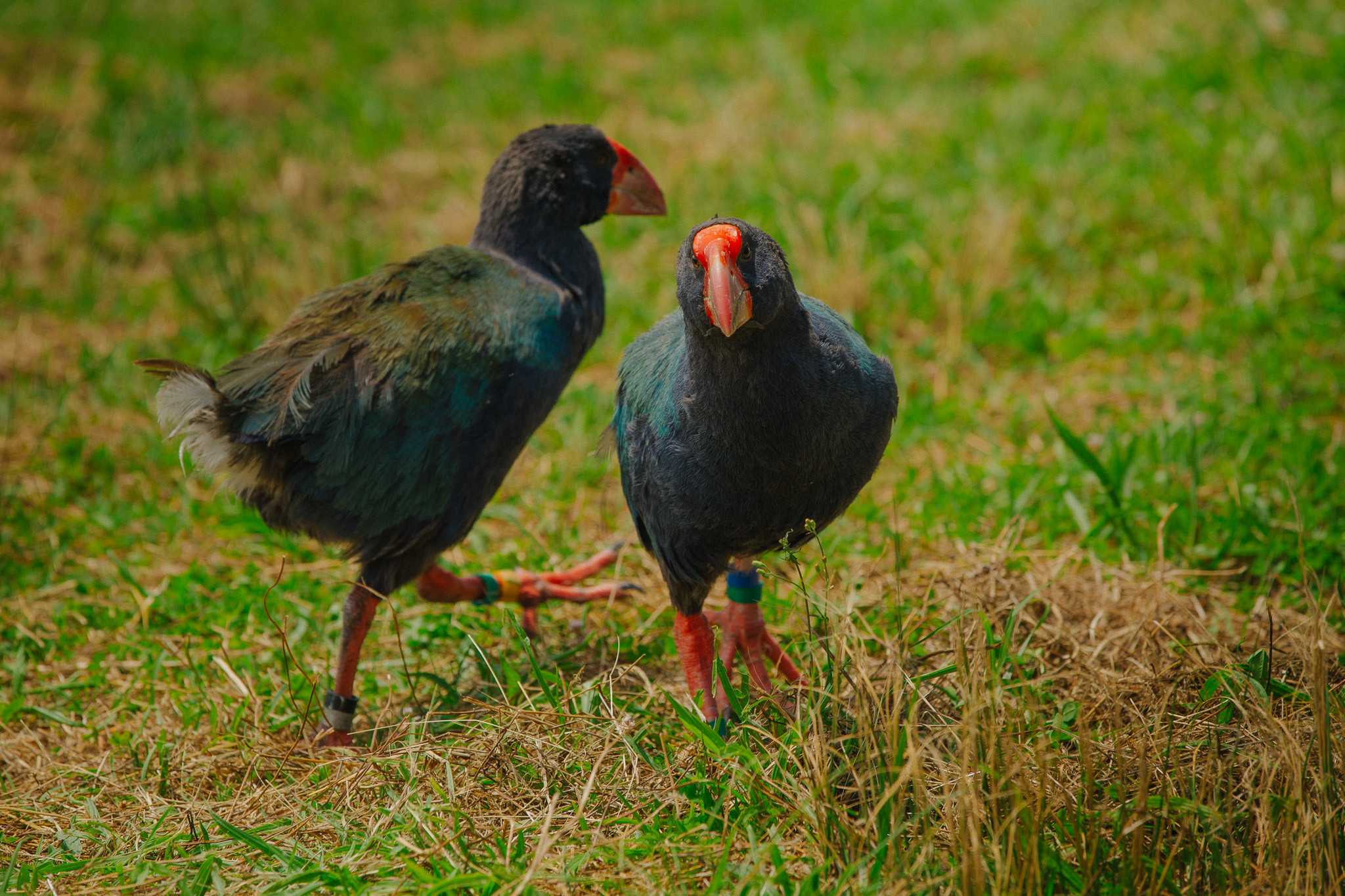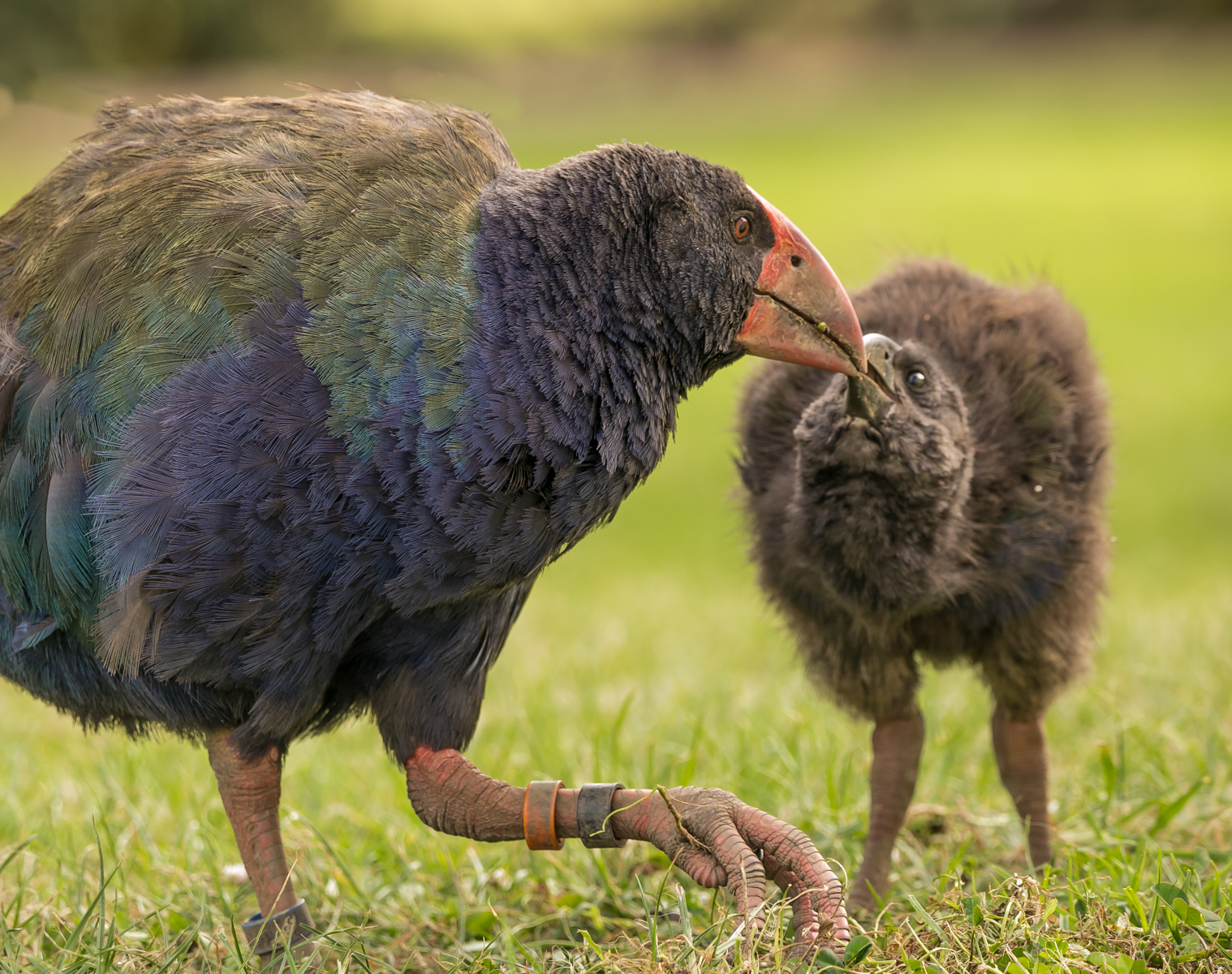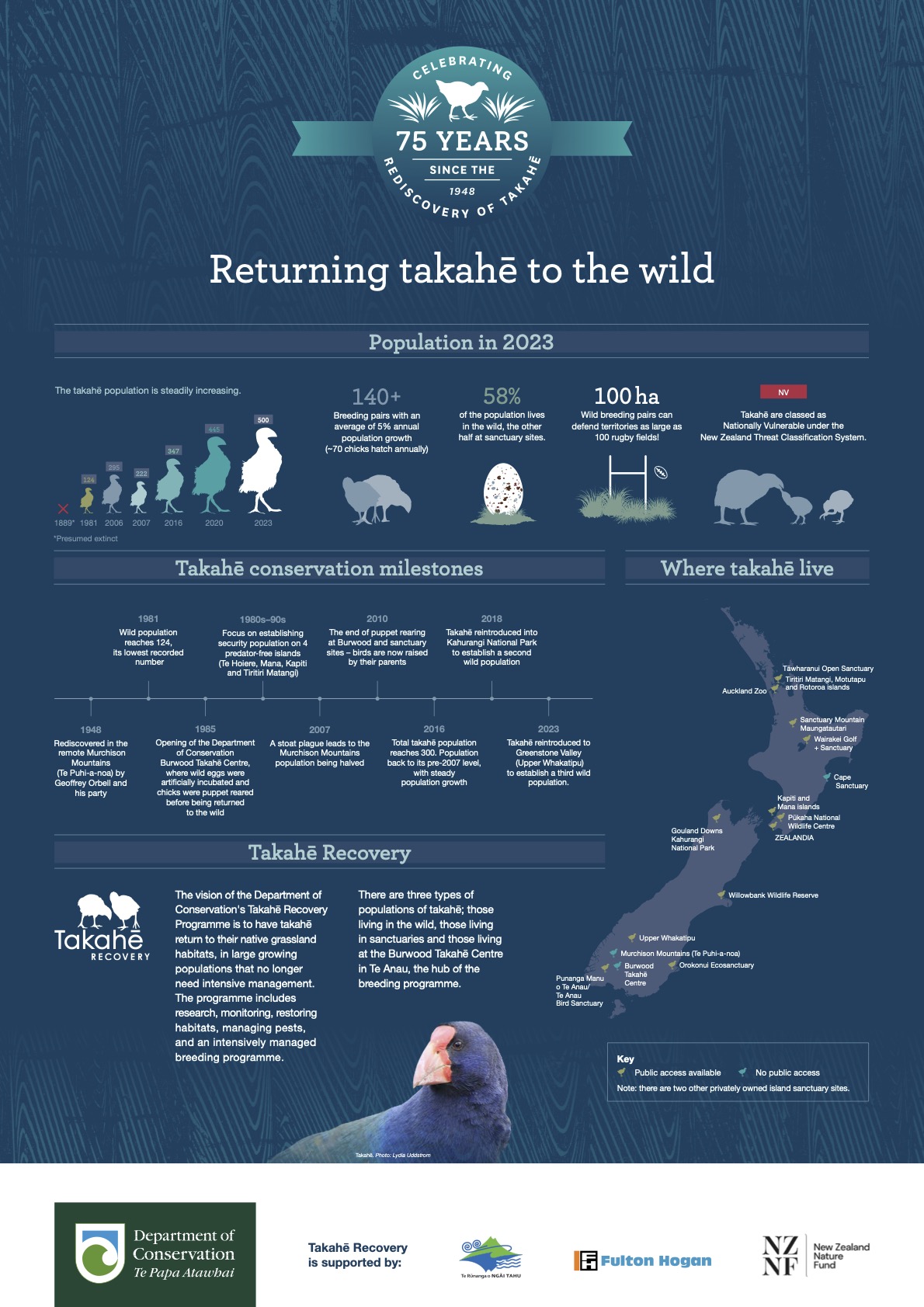Takahē: Survivors against the odds
For 50 years we thought they were extinct, South Island takahē were rediscovered in 1948 in a remote Fiordland valley. This is a survival story like no other as now their numbers are growing and takahē are returning to the wild.
Takahē are a large bird (up to 50cm high and 3kg in weight) but they are flightless; so despite being equipped with a powerful beak and legs, they're no match for the wiles of New Zealand's introduced predators.
Takahē are a similar looking to the common pukeko. Where the pukeko is skinny and blue with a black back, the takahē is much larger and more colourful. It has a strong red beak and stout red legs.
Its rich feathers range from an iridescent dark blue head, neck and breast to peacock-blue shoulders, and turquoise and olive green wings and back. Takahē have a very distinctive call: a loud clowp. Their contact call is easily confused with that of the weka but is generally more resonant and deeper.
The beak of the takahē is uniquely adapted to getting the best parts out of grass stalks. It's perfect for cutting and stripping the base of grass tillers to get at the juicy new growth, but they still need to feed nearly all day to get enough nourishment.
Takahē are also very adept at nipping seed stalks off and daintily holding them in one foot while elegantly sliding their beaks along the seed head to strip the seeds and eat them.

Takahē generally lay between one and three eggs each October, of which around 80% hatch. The 30-day incubation period is shared by both parents, who also feed the chicks for the first three months. Young birds often stay with their parents for up to 18 months, helping to rear the next year's chick.
When you meet one of our resident takahē on Rotoroa, let them find their own food and stay a reasonable distance away from them. We want as many people as possible to enjoy them.

A helping hand
For 50 years we thought they were extinct, now takahē (classified as 'nationally vulnerable'), numbers are growing and takahē are returning to the wild.
Takahē Recovery is a story of partnership. DOC, iwi and Fulton Hogan work closely together to ensure takahē continue to make strong progress with a population of just over 500 birds.
We are part of DOC's metapopulation management programme, which has not only grown the takahē population, but has also developed the capacity to support bringing breeding takahē to new sites such as Rotoroa Island. This Takahē Recovery Programme, based in Te Anau is the longest running species conservation programme in New Zealand and has pioneered many conservation techniques later used to save endangered species in New Zealand and around the globe.
The programme's priority is to establish 125 breeding pairs of takahē at safe sites. Unfortunately the Murchison Mountains, while home to the only wild population of takahē, is not a safe site because of the on-going threat of stoats. Safe sites include pest-free islands as well as mainland sites with well established predator control, like predator-proof fencing.
Rotoroa Island has been identified as one of those safe sites. Our birds come from DOC's very successful 'takahē farm', the Burwood Takahē Breeding Centre. They come with the blessing of Ngai Tahu who are their kaitiaki or guardians and have been received by our kaitiaki, Ngai Tai and Ngati Paoa. Takahē Recovery is all about returning takahē to the wild, find out more about this incredible story at www.takaherecovery.org.nz.
It’s a survival story like no other, find out more and meet these wonderful flightless birds when you visit our island sanctuary

